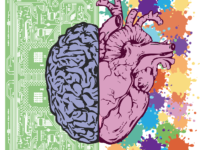Imagine a hypothetical contest comparing the intelligence of all organisms with a brain. It can be reasonably guessed that the winner would be the human brain. Yet, what makes our brains superior to other organisms if it’s not the largest or even the most complex? To answer this question, researchers face the daunting task of tracing the brain’s development throughout human evolutionary history.
Over the past 7 million years, the size of the human brain has tripled, with the most growth occurring in the past 2 million years. The brain has grown to accommodate changes by accentuating regions involved in communication, problem-solving, and advanced cognitive functions. For instance, in the Homo habilis which appeared 1.9 million years ago, the Broca’s area within the brain underwent an increase in size due to the expansion of language. Interestingly, in the past 10,000 years of human existence, the brain has actually shrunk overall. One factor that has been hypothesized to cause this change is limited nutrition as populations switched from hunter-gatherer to agricultural diets. However, the size of the brain rebounded in the past 100 years as industrial societies improved childhood nutrition.
When analyzing the development of the human brain, neuroscientists often compare the modern human’s brain to that of the Neanderthal’s. The main difference between modern and Neanderthal brains comes down to the shape rather than the size. Based on analysis of endocranial casts of human fossils, 300,000 years ago, the brain size of early Homo sapiens was already in the range of present-day humans. This evolution occurred gradually in the Homo sapiens lineage, and present-day human variation in brain shape was reached between 100,000 and 35,000 years ago. Modern human brains are described as globular with a steep frontal part and an enlarged round cerebellar area. Neanderthal brains are not globular like modern human brains but instead anterior-posteriorly elongated.
The main difference between modern and Neanderthal brains comes down to the shape rather than the size.
Furthermore, scientist Suzana Herculano-Houzel at the Institute of Biomedical Sciences at the Federal University of Rio de Janeiro, found that the distribution of neurons also enhances the human brain in comparison to other species. Human brains have approximately 86 billion neurons, with 16 billion in the cerebral cortex. This part of the brain controls mental talents. In comparison, orangutans and gorillas have significantly fewer cortical neurons, approximately 9 billion. In general, the main difference when comparing human and nonhuman brains is that humans have the most cortical neurons of any species. Humans don’t necessarily have denser brains, rather we have evolved mechanisms to accommodate these extra cells. The human brain also consumes 20 percent of the body’s total energy, leaving scientists to wonder how the humans evolved to sustain the brain. One theory is the expensive tissue hypothesis, which suggests that a metabolic trade-off occurred, allowing the brain to grow to its current size and power while the energy-use of the gut decreased. For instance, primates that have larger brains have smaller intestines.
The gut likely shrunk so the brain could grow to its current size.
Looking at the human genome provides an understanding of the physiological adaptations that allowed for significant brain growth. Gregory Wray, an evolutionary biologist at Duke University, analyzed a family of genes involved in the movement of glucose energy, with one member of the family active in brain tissue and the other in muscle. If there was a metabolic trade-off as described by the expensive tissue hypothesis, then these specific genes would behave differently in humans and chimpanzees. Wray and his team’s results indicated that within the regulatory regions for the muscle and brain glucose-transporting genes, there were significantly more mutations than expected by chance. An increased amount of mutations suggests that these regions underwent accelerated evolution. Wray concluded that evolutionary pressures resulted in a modification of human regulatory regions, which caused energy from the muscles to be channeled to the brain. Therefore, the gut likely shrunk, so the brain could grow to its current size.
Evolutionary changes throughout history have allowed the human brain to grow to its current size and capacity, ranking us at the top for animal intelligence. Contrary to popular belief, size alone is not the differentiating factor from our Neanderthal ancestors; rather, the change in shape indicates the strengthening of parts of the brain involved in complex mental abilities. Our brain has also evolved to hold the most cortical neurons because of a metabolic trade-off with the gut. All of these changes have contributed to the high-level functioning of the modern human brain, and neurological research in the future will only further our understanding of this complex history.
Scientific American (2013). DOI: 10.1038/scientificamericanmind0713-76b
Scientific Advances (2018). DOI: 10.1126/sciadv.aao5961







Clear presentation of development of human brain. Interesting that Broca’s area increased in size as language evolved and lifestyle changed. Did the the Neanderthal’s brain size remain static in that area and affect communication or did hunter gatherer lifestyle determine communication skills? How will the human brain be affected in future space travel lifestyle? Keep an eye on Broca’s Area.